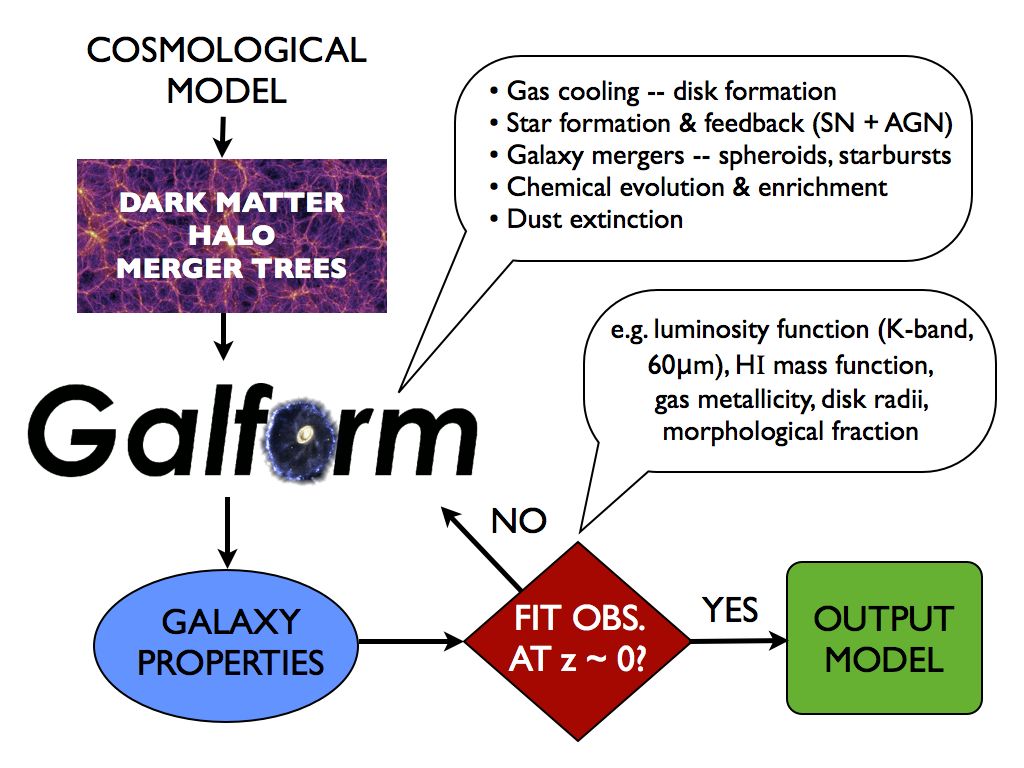GALFORM
The GALFORM model is a semi-analytical model of galaxy formation that traces the evolution of the baryonic content inside dark matter halos from the high redshift Universe through to the present day. GALFORM is able to model the star formation and merger history of a galaxy and make predictions for many galaxy properties including luminosities over a substantial wavelength range extending from the far-UV through to the sub-millimetre.
The GALFORM model populates a distribution of dark matter halos with galaxies by using a set of coupled differential equations to determine how, over a given time-step, the various astrophysical processes regulate the size of the various baryonic components of galaxies. GALFORM models the main physical processes governing the formation and evolution of galaxies: (i) the collapse and merging of dark matter (DM) halos, (ii) the shock-heating and radiative cooling of gas inside DM halos, leading to the formation of galactic disks (iii) quiescent star formation in galactic disks, (iv) feedback as a result of supernovae, active galactic nuclei and photo-ionisation of the inter-galactic medium, (v) chemical enrichment of stars and gas and (vi) dynamical friction driven mergers of galaxies within DM halos, capable of forming spheroids and triggering starburst events. The prescriptions describing these physical processes are described in a series of papers: Cole et al. (2000), Benson et al (2003), Baugh et al. (2005), Bower et al. (2006), Font et al. (2008), Lacey et al. (2008), Lagos et al. (2011), as well as in the reviews by Baugh(2006) and Benson & Bower (2010).
The adjustable parameters in GALFORM are set by requiring that the model predictions match a subset of observations, primarily of the local galaxy population. Traditionally, greater weight is assigned in this process to matching the optical and near-infrared luminosity functions of galaxies at the present day. A flowchart summarising the construction process of all published variants of the GALFORM model is shown below.
